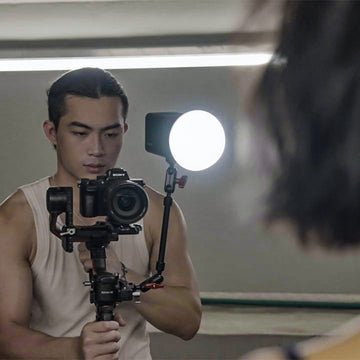Photography lighting is a crucial element in creating captivating and impactful images. The way light interacts with the subject can completely transform the mood, tone, and overall feel of a photograph. In this article, we will delve into the various lighting styles in photography and how they can be used to unleash your creativity and elevate your photography skills.

Understanding the Basics of Lighting
Before we explore different lighting styles, it's essential to have a solid understanding of the basics of lighting in photography. The three primary lighting setups are key light, fill light, and backlight. The key light is the primary light source that illuminates the subject, while the fill light helps to soften shadows and reduce contrast. The backlight is positioned behind the subject to create separation and depth.
When experimenting with lighting, it's important to consider factors such as the quality, direction, and color of light. Natural light, for example, can vary throughout the day, offering soft, diffused light during the golden hour and harsh, direct light at midday. Artificial light sources, on the other hand, provide more control over the direction and intensity of light.
Utilizing Natural Light to Enhance Your Photos
Natural light is a versatile and readily available light source that can produce stunning results when used effectively. The golden hour, which occurs during the first and last hours of sunlight, offers a warm, soft glow that is ideal for capturing portraits, landscapes, and still life photography. The diffused light during overcast days can also create a beautiful, even illumination for various subjects.
Shadows play a crucial role in natural light photography, adding depth and dimension to the images. By strategically positioning the subject in relation to the light source, photographers can create compelling compositions that evoke emotion and visual interest.
Experimenting with Artificial Lighting Techniques
Artificial lighting opens up a world of creative possibilities in photography. Studio lights, speedlights, and continuous lighting sources allow photographers to have complete control over the intensity, color, and direction of light. High key lighting, characterized by bright, even illumination, is often used in fashion and product photography to achieve a clean, polished look.
On the other hand, low key lighting, which involves a significant amount of contrast and dramatic shadows, can add a sense of mystery and intrigue to portraits and still life images. By manipulating artificial light sources, photographers can sculpt and shape the light to create visually striking and dynamic compositions.
Embracing Creative Lighting Styles for Artistic Expression
Unleashing your creativity in photography involves exploring unconventional lighting styles and techniques. Light painting, for instance, allows photographers to use handheld light sources to "paint" and illuminate specific areas of the frame during long exposures. This technique can result in mesmerizing, abstract images that showcase movement and vibrant colors.
Another innovative approach is using colored gels to modify the color of artificial light sources. By incorporating colored gels, photographers can infuse their images with a unique and surreal ambiance, adding a creative twist to their visual storytelling.
Ultimately, mastering the art of lighting in photography requires continuous experimentation, observation, and a keen eye for detail. Whether you're working with natural light, artificial lighting, or a combination of both, understanding the nuances of light and shadow will empower you to unleash your creativity and capture compelling, visually stunning photographs.
